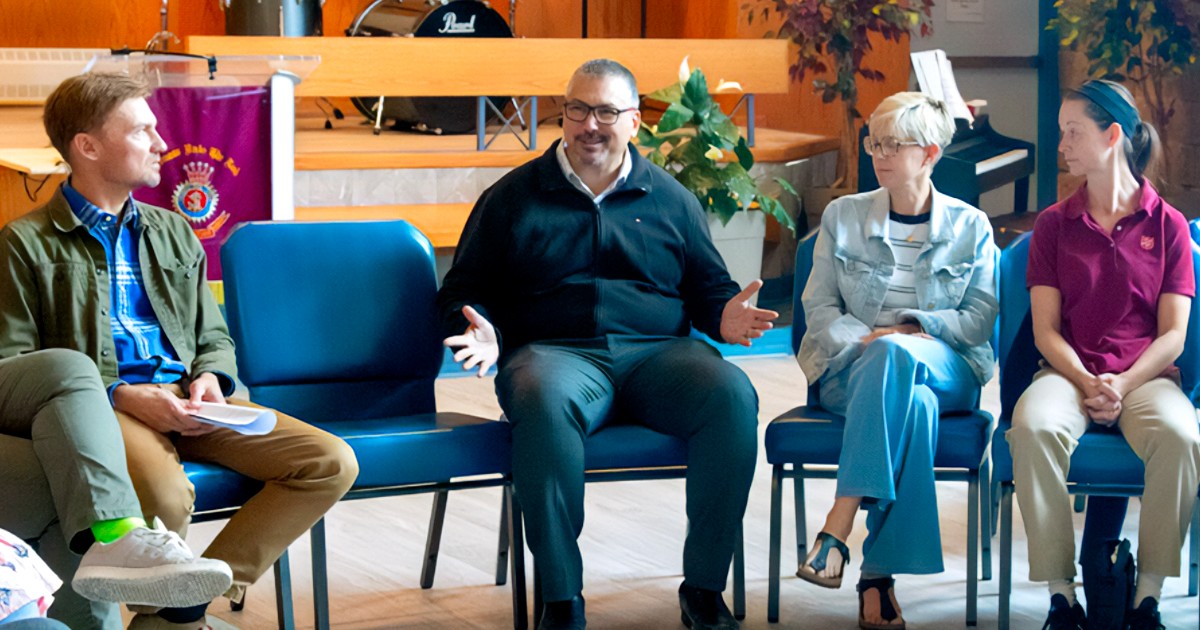Human trafficking is a form of modern slavery. The United Nations defines human trafficking as the recruitment, transportation, transfer, harbouring or receipt of persons by improper means such as force, fraud, coercion, deception, abduction and abuse of power for the purpose of exploitation. It’s a multibillion-dollar criminal industry that denies freedom to an estimated 40.3 million people around the world, including 20.9 million people who are forced into different forms of labour and sex trafficking.
People read statistics but don’t often engage with trafficking on a deeper level because they feel it is a problem that is happening “over there” in developing countries. Many think such exploitation, trauma and oppression could never happen here. As the old saying goes, “Out of sight, out of mind.”
Yet, Canada and Bermuda are not immune to human trafficking. Canada has been labelled internationally as a “destination country” for human-trafficking victims, a “transit country” through which victims are moved and a “source country” for recruiting potential victims.
No matter where we live, chances are it is happening nearby. Here are some scenarios of the various types of human trafficking.
Sex Trafficking
• A young girl is pressured by her “boyfriend” to sell her body out of a hotel room after school.
• A woman is transported around the country and forced to work in massage parlours and unofficial brothels.
Labour Exploitation
• A man enters the country on a temporary migrant worker visa and is now picking fruit on a farm that has unsafe and unhealthy working conditions.
• Another man works in a restaurant in conditions that degrade his dignity and has been deprived access to his passport. He fears for the safety of his family if he tries to quit.
The Salvation Army’s Mandate
The Salvation Army is strategically positioned to actively and intentionally make a difference in helping people escape human trafficking. Everyone in the Canada and Bermuda Territory is needed to combat this form of social injustice, to make a difference in the life of someone who is being trafficked and exploited. Whether you are an officer, employee or volunteer—this is everyone’s fight.
To stand with the many organizations and individuals committed to fighting human trafficking in Canada, the Army’s territorial human trafficking committee has developed a “Fight for Freedom” national strategy. These are the four objectives:
1. Awareness and Training
Effective and intentional education is needed at every level of The Salvation Army’s territorial structure so that every person and ministry expression is trained to know about modern slavery, human trafficking and exploitation, and equipped to combat it.
2. Prevention and Outreach
The Salvation Army is strategically positioned to prevent human trafficking and exploitation within the Canada and Bermuda Territory. Our goal is to establish and expand existing ministries and programming to prevent human trafficking and the exploitation of people.
3. Survivor Services and Recovery
As survivors of sex and labour trafficking work to rebuild their lives, it is essential to provide holistic services that recognize the unique trauma they have experienced. This may include housing, counselling, medical care, legal advocacy, job training, interpretation, immigration relief, substance abuse recovery, and food and clothing assistance.
4. Partnership and Advocacy
Human trafficking is the fastest growing crime in the world. For this reason, The Salvation Army is intentionally collaborating with others to fight against it. Deliberate partnerships are being formed, both within The Salvation Army and with external organizations.
The work of fighting trafficking is never in short supply. God calls us to, “Speak up for those who cannot speak for themselves, for the rights of all who are destitute. Speak up and judge fairly; defend the rights of the poor and needy” (Proverbs 31:8-9). Ultimately, this is his battle, this is his fight, and everyone is invited to join.
Photo: Tim Teebken/Photodisc via Getty Images Plus










Leave a Comment